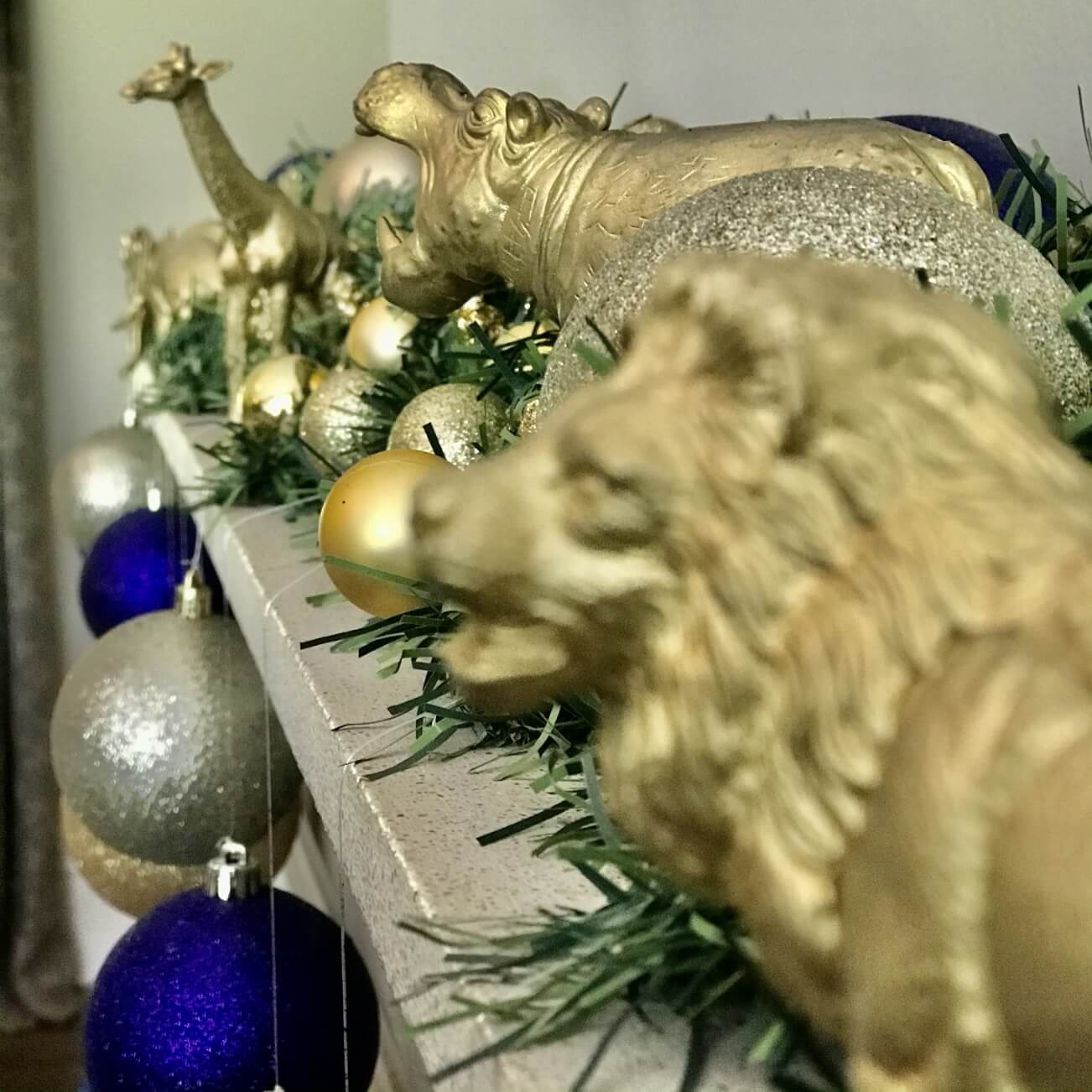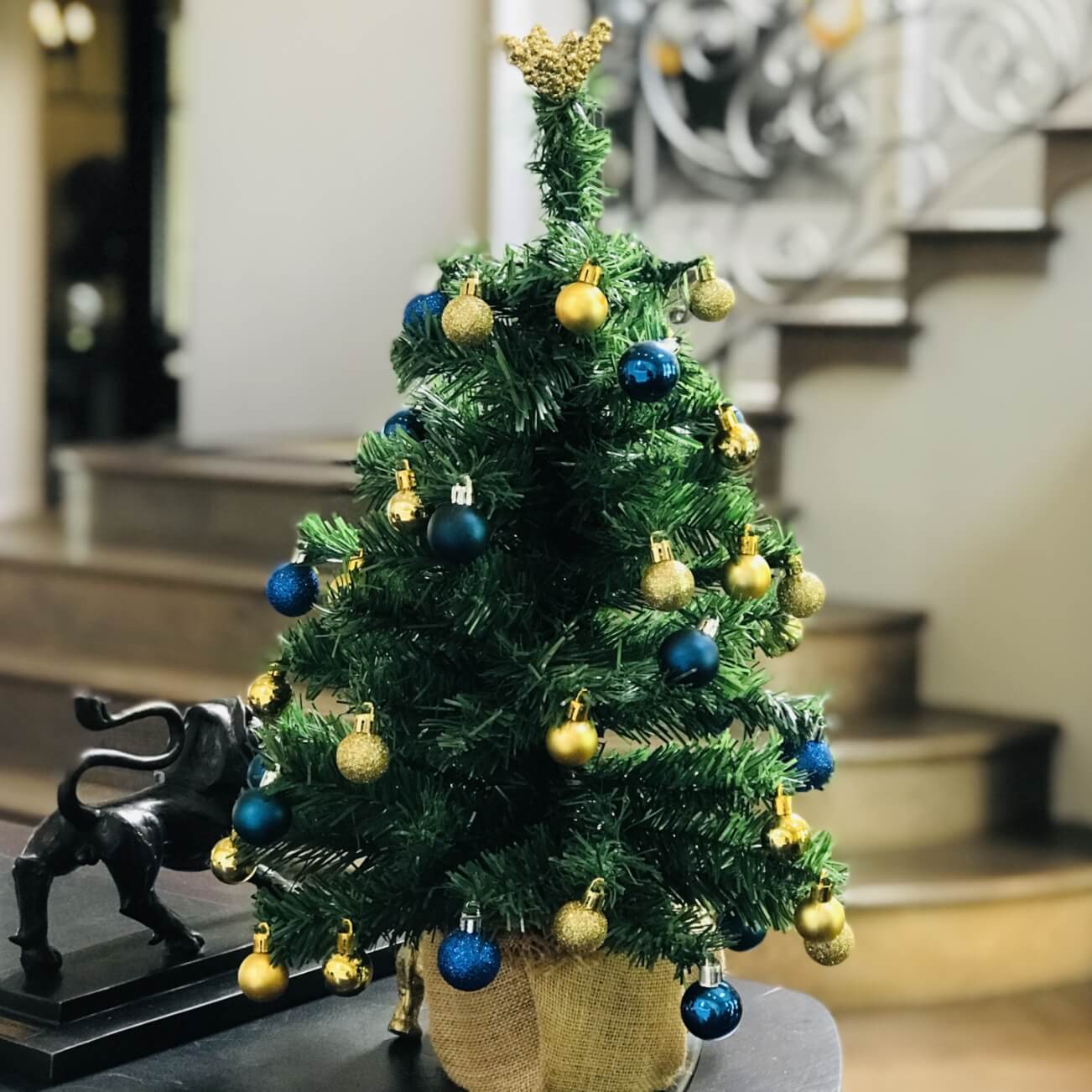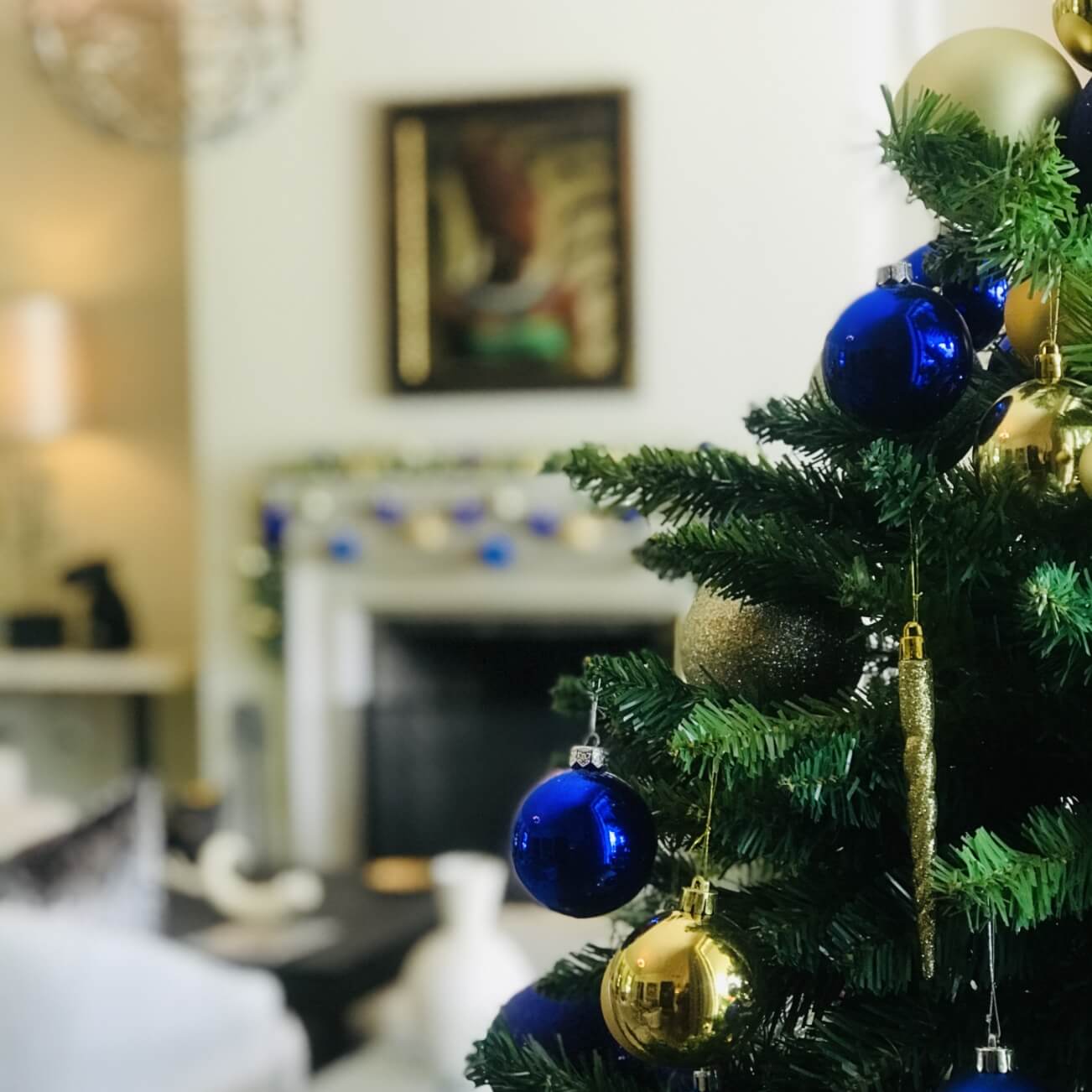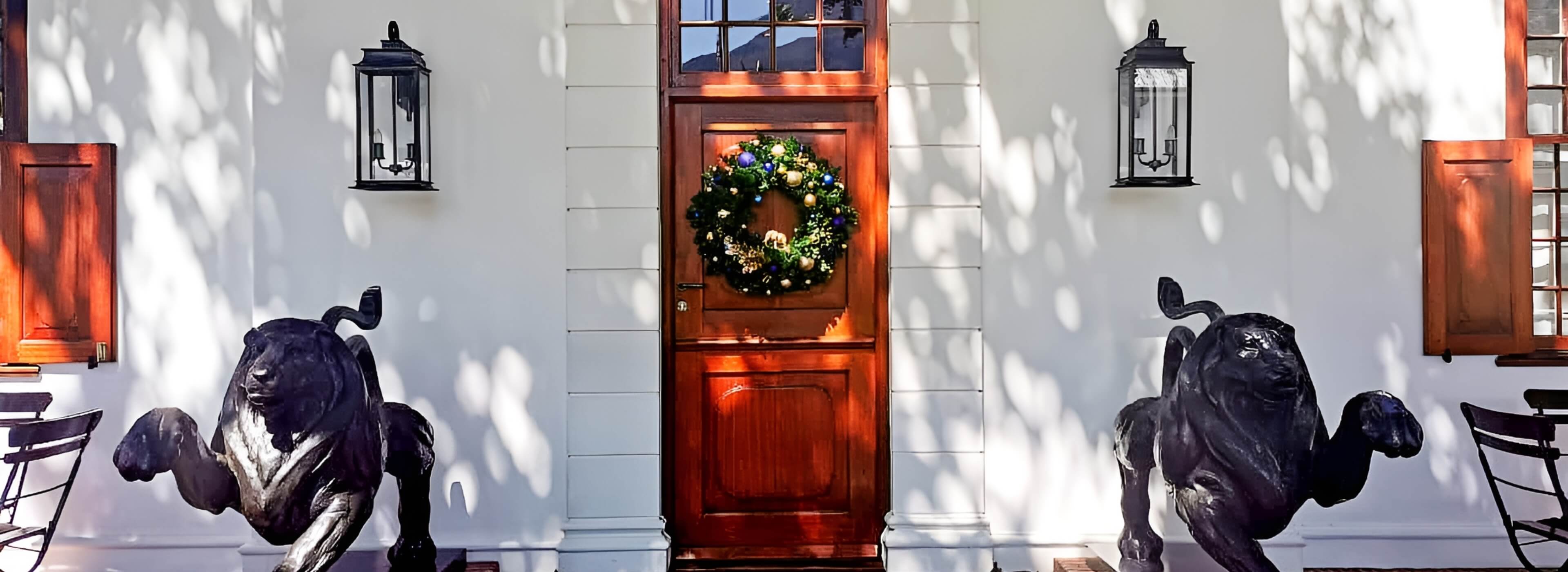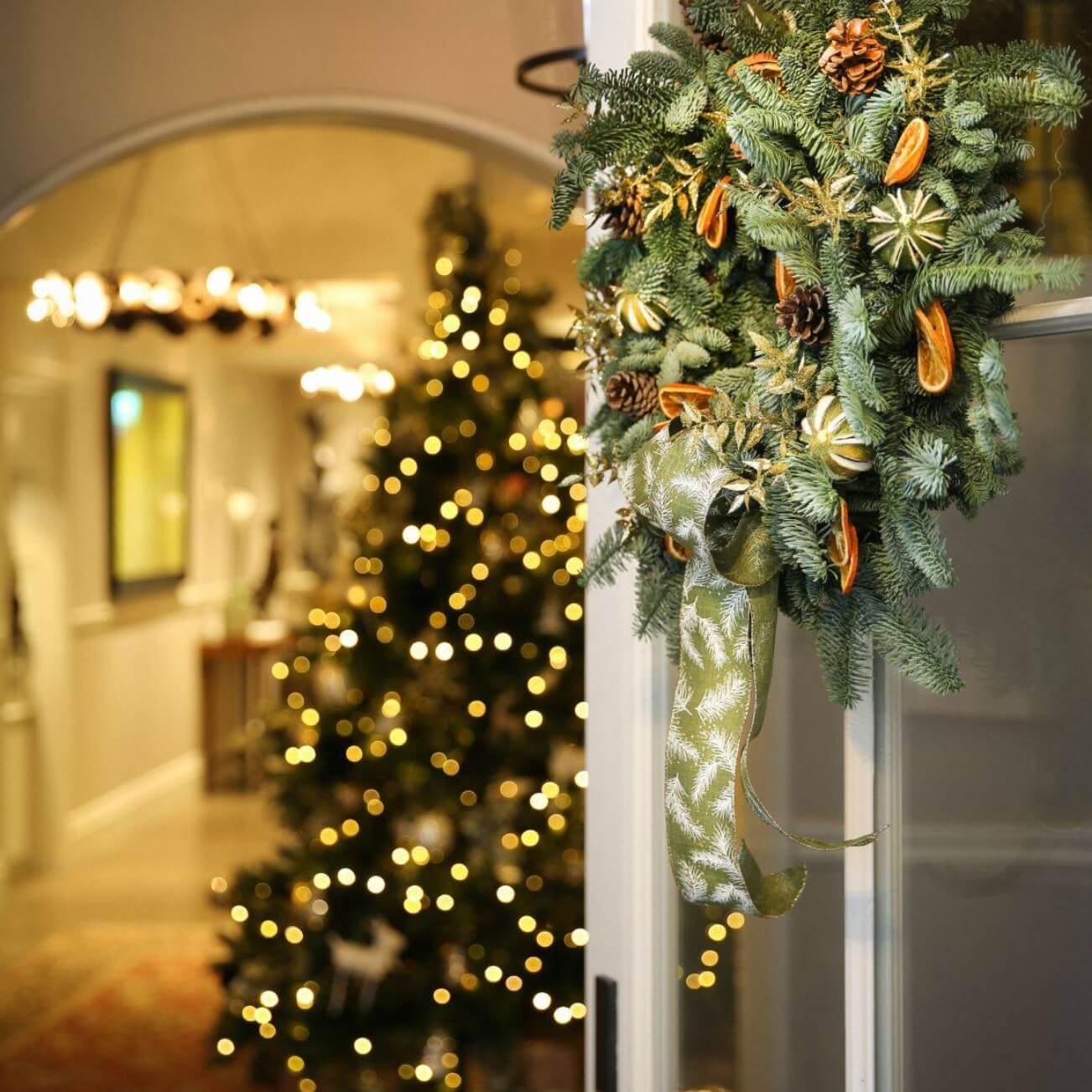
North to South Christmas Customs
Are you dreaming of a winter wonderland, or longing for sun-filled festivities over the festive period?
With properties in both the United Kingdom and South Africa, we are blessed to be able to enjoy and share the best of both worlds at this special time.
When the Weather is Frightful
In our UK home at Linthwaite House in the heart of The Lake District, the weather usually lingers around 4.7 °C in December, with the record low for the area - reached in 1940 - having plummeted to - 21 °C.
Here, it is all about getting cosy - sipping on mulled wine, eggnog or hot buttered rum at the fire while gazing out at the sparkling frosts, frozen lakes, and snow-covered mountains.
Most locals embrace Christmas traditions whole-heartedly. Parents encourage young children to write notes to Father Christmas, describing their behaviour during the year and asking for their little hearts’ desires. These letters are then either ‘sent’ or burnt in the fireplace, so that St. Nicholas can read their contents in the chimney smoke.
Families also organise Christmas tree-cutting excavations at tree farms and decorate the (typically pine) trees with baubles, tinsel, and Christmas lights whilst watching their favourite Christmas movies on repeat. Some beloved household shows - from Downton Abbey to Gavin and Stacey - also treat their fans to festive episodes, and even the local supermarkets and brands (most notably John Lewis) release much-anticipated Christmas commercials. Calling in to the radio to see if their favourite Christmas songs can reach the top of the Christmas charts is another tradition that has lived on in the UK since the 1950s.
Culturally-inclined festive enthusiasts will head out to their local theatres to watch - and sometimes partake in - Christmas pantomimes (or pantos) - musical comedy shows that are often inspired by well-known fairy tales, and include a mixture of pop culture references and audience participation.
On the big day itself, most Brits will be found visiting family and friends, opening presents, enjoying a festive feast, and watching the royal Christmas address (a highlight hailing back to the 1930s).
Festive meals in this part of the world are hearty and comforting. Think traditional cream tea, full English breakfasts, leisurely five-course lunches, and candlelit dinners complete with entertainment.
The main Christmas meal usually contains a mixture of roast beef, turkey, and goose, often accompanied by brussel sprouts, pigs in blankets, cranberry and bread sauce, and a selection of vegetables like carrots and peas.
Just before the dinner or lunch begins, it is tradition for people to pull Christmas crackers around the table. Invented by London baker Tom Smith in 1947, Christmas crackers often adorn the Christmas table. They are usually filled with little festive toys, a joke, a Christmas question for the group and, of course, a brightly coloured Christmas crown or hat.
During this hearty and joyous meal, many of the adults at the table enjoy seasonal drinks. This often includes hot wine with spices; Winter Pimms - a brandy-based, cinnamon, orange and caramel drink; Champagne; or a Smoking Bishop - a Victorian drink consisting of a steaming mug of port, red wine, cloves, and oranges. Enjoying a festive hot alcoholic beverage is a long-time tradition and has, historically, been a way to bring communities together and even scare away bad spirits.
After indulging in the hearty main meal, the decadent dessert is dished. A festive offering would be amiss without the classic 14th century Christmas pudding - a fruit-based cake made with dried fruits, wines, and spices. This dish historically held a bit of a party trick, as it usually featured a dried legume or silver coin which, when found, would instate royal stature to the excavator.
If there is no Christmas pudding, you can be sure to find some Christmas cake or fruit cake. Made from a mixture of dried fruits, spiced cake, and a soaking of either brandy or rum, this dessert is not for the faint-hearted. It is often topped with icing or marzipan, and has to be prepared months in advance in order to be properly matured by Christmas time.
Other Christmas dessert staples include classic British trifle, buttery Scottish shortbread, a yule log - with cake, cream, and chocolate - and a Victoria sponge cake.
Either served as a dessert or with tea, mince pies are also likely to make an appearance. First served in the early middle ages, the original recipe contained a mixture of finely minced meat, fruit, and a preserving liquid. During this period in history, it was customary for people to eat a mince pie a day, from the beginning of December until January 6th. Modern mince pies, on the other hand, are enjoyed throughout the festive season and, luckily, no longer contain meat.
For those wanting to make the most of the winter wonderland outdoors, popular activities in the area include sledging, ice skating, skiing, creating snow angels, and building snowmen.
Locals often head to Christmas light switch-on events which, depending on the size of the town, can include celebrity appearances, food, music, and festive activities. Other popular outdoor events include stargazing during the hibernal solstice (on the 21st of December), winter wildlife-watching, and roasting chestnuts on an open fire in the garden.
When the Weather is Delightful
At our homes at Leeu Estates, Leeu House, and Le Quartier Français in Franschhoek, South Africa, we often enjoy sunny days of around 28°C, with the highest ever recorded temperature of the area reaching a sweltering 41°C.
We start the festivities by decking our halls with decorations. Unlike in the United Kingdom, South Africans usually decorate fir trees, and use slightly less traditional embellishments - including metal and beaded ornaments which have been made to resemble national fauna and flora.
Here, it is all about spending as much time as possible outdoors, witnessing the bounty of blooming wildflowers, exploring mountainous hiking trails, or lazing in and around the pool.
Resident guests at Leeu Estates can make the most of the balmy weather by strolling through the winding walkways of the perfectly manicured gardens and riverside oasis, or even booking a guided garden tour led by one of the Leeu Locally Grown team members to learn about our farm-to-fork philosophy and the unique vegetation that forms part of our Leeuscapes.
There are, in fact, plenty of opportunities for splashing in and lazing around a sparkling pool at Leeu Collection South Africa properties. While the popular pools (complete with outdoor bars) at Leeu House and Le Quartier Français are available to all resident guests, booking a Pool Suite at Le Quartier Français offers a private walled garden with a secluded pool, and many of the exclusive cottages on Leeu Estates come complete with private pools and even outdoor hot tubs.
More adventurous visitors can explore the outdoors of Franschhoek by hiking the area’s scenic trails, potentially encountering local wildlife such as porcupine, klipspringer, dassies, baboons, caracal, Cape rockjumper, Cape sugarbird, the Protea canary, and the elusive Cape Leopard (although this would a rare sighting for a daytime hiker). Mont Rochelle Nature Reserve is a perfect location to start, with various rare plants and wildlife in abundance.
South Africans dining at home over the festive period enjoy a wide variety of foods reflecting the cultural diversity of the country. These meals can include amadumbe - a traditional Zulu meal, umngqusho - a Xhosa side dish, or a braai - a barbeque at which marinated steaks, boerewors sausages, crisp green salads, braaibroodjies (a type of toasted sandwich), and creamy potato salads are enjoyed.
For dessert, South Africans often enjoy malva pudding - sometimes referred to as ‘lekker pudding’ - a sweet, spongy pudding which is accompanied by either (or both) custard or ice cream.
Guests staying at a Leeu Collection property in Franschhoek can enjoy creative and award-winning festive fare at the fine-dining, farm-to-fork restaurants - The Dining Room and La Petite Colombe on Leeu Estates, and Protégé and Épice at Le Quartier Français. Each as fantastic as the next, Leeu Collection restaurants transport guests on extravagant taste journeys inspired by local organic produce, spices, and international influences - all doing justice to the Culinary Capital of the Cape, and many enjoyed al fresco under the famous South African sun.
For some extra festive cheer, guests and visitors can wrap up the day with a tutored wine tasting of world-class wines at the Wine Studio on Leeu Estates, even stocking up on some of the finest vintages for unique Christmas gifts for loved ones.
Ready to plan your next unrivalled festive getaway? Contact our Guest Liaison team to find out more.
